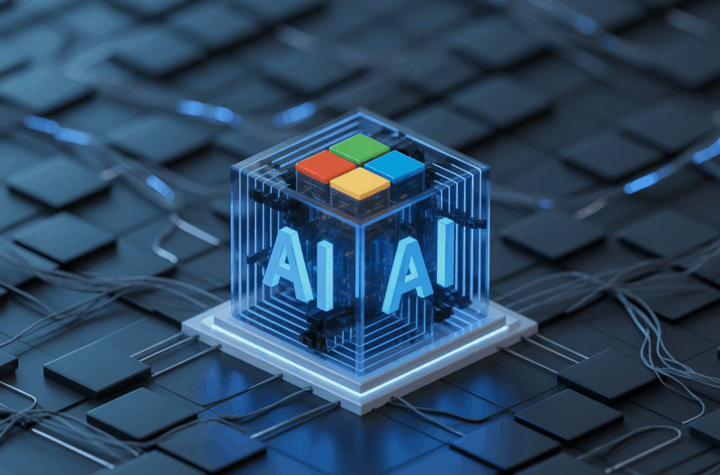
In our data-driven world, information is more than just figures on a spreadsheet—it’s the foundation for making strategic decisions. Yet, raw data alone isn’t enough. Companies today need insights that help them anticipate what lies ahead. Enter predictive analytics and AI-powered forecasting—a dynamic duo transforming how businesses operate and plan for the future.
Let’s dive into how AI is revolutionizing predictive analytics and providing organizations with a competitive advantage.
Understanding Predictive Analytics
At its core, predictive analytics uses data, statistical models, and machine learning techniques to forecast future outcomes based on past trends.
Rather than merely reporting what’s already happened, predictive analytics seeks to answer key questions like:
- Which customers might make a purchase next month?
- How much inventory should we stock for the coming quarter?
- Which marketing campaigns will deliver the best ROI?
This proactive approach empowers businesses to make informed decisions before challenges arise.
The AI Advantage in Predictive Analytics
Traditional forecasting methods depend heavily on static models and predefined rules. AI takes predictive analytics further by learning patterns within data and refining predictions over time. Here’s how AI elevates forecasting:
1. Handling Massive Data Sets
AI can analyze enormous volumes of data quickly, spotting intricate patterns and subtle correlations that traditional methods might overlook.
2. Increasing Precision Over Time
Machine learning models continuously improve as they process more data, delivering increasingly accurate predictions with every cycle.
3. Real-Time Decision-Making
AI enables businesses to generate insights instantly. Whether it’s adapting inventory levels to shifting demand or responding to customer preferences, AI ensures timely actions.
4. Revealing Complex Patterns
AI uncovers hidden, non-linear connections in data—like how a mix of social trends, weather conditions, and economic factors could influence sales figures.
Real-World Applications of AI-Driven Predictive Analytics
AI-driven predictive analytics isn’t reserved for big corporations—it’s becoming increasingly accessible to businesses of all sizes. Here’s how it’s making an impact:
Predicting Customer Actions
Companies can anticipate customer behaviors such as:
- Identifying customers at risk of leaving and targeting them with retention strategies.
- Forecasting which products individual customers are likely to buy next.
- Customizing promotions to specific customer segments.
This results in tailored marketing efforts and stronger customer relationships.
Streamlining Supply Chains and Inventory
AI helps predict demand with remarkable accuracy, allowing businesses to:
- Avoid excess inventory or shortages.
- Optimize supply chain operations.
- Reduce costs and improve cash management.
Industries like retail, manufacturing, and logistics benefit enormously from this capability.
Financial Forecasting and Risk Assessment
Businesses and financial institutions use AI to:
- Project market movements.
- Assess credit risk and financial stability.
- Refine revenue and expenditure forecasts.
These insights enable organizations to minimize risk and make more confident financial decisions.
Advancements in Healthcare
Healthcare providers utilize predictive analytics for purposes such as:
- Predicting potential disease outbreaks.
- Identifying patients who may require proactive care.
- Personalizing treatment plans for better outcomes.
AI’s predictive power is transforming healthcare from reactive to proactive care delivery.
Challenges to Consider
While AI-driven predictive analytics offers immense potential, it’s not without challenges:
- Data Integrity: Models rely on accurate and unbiased data. Poor-quality data can lead to flawed predictions.
- Technical Complexity: Building and managing AI systems often requires specialized skills and resources.
- Ethical Considerations: Companies must handle personal data responsibly, staying compliant with privacy laws like GDPR or CCPA.
Despite these challenges, thoughtful adoption of AI can yield significant benefits.
The Road Ahead for AI in Predictive Analytics
As AI technology continues to progress, predictive analytics will become even more powerful and widely adopted. We’ll likely see:
- Seamless integration into popular business software and tools.
- Greater transparency in how AI models arrive at their predictions.
- Broader adoption across industries, from startups to large enterprises.
Organizations that embrace AI for predictive analytics today will be well-positioned to thrive in the competitive markets of tomorrow.
Closing Thoughts
Predictive analytics and AI forecasting have moved beyond theoretical concepts and become essential tools for modern businesses. Whether your goal is to enhance sales, streamline operations, or build better customer experiences, AI provides the insights needed to prepare for the future.






More Stories
AI Meets Quantum Computing: Unlocking New Frontiers
How Open-Source AI Is Gaining Momentum
AI Startups and Giants Making Waves This Year